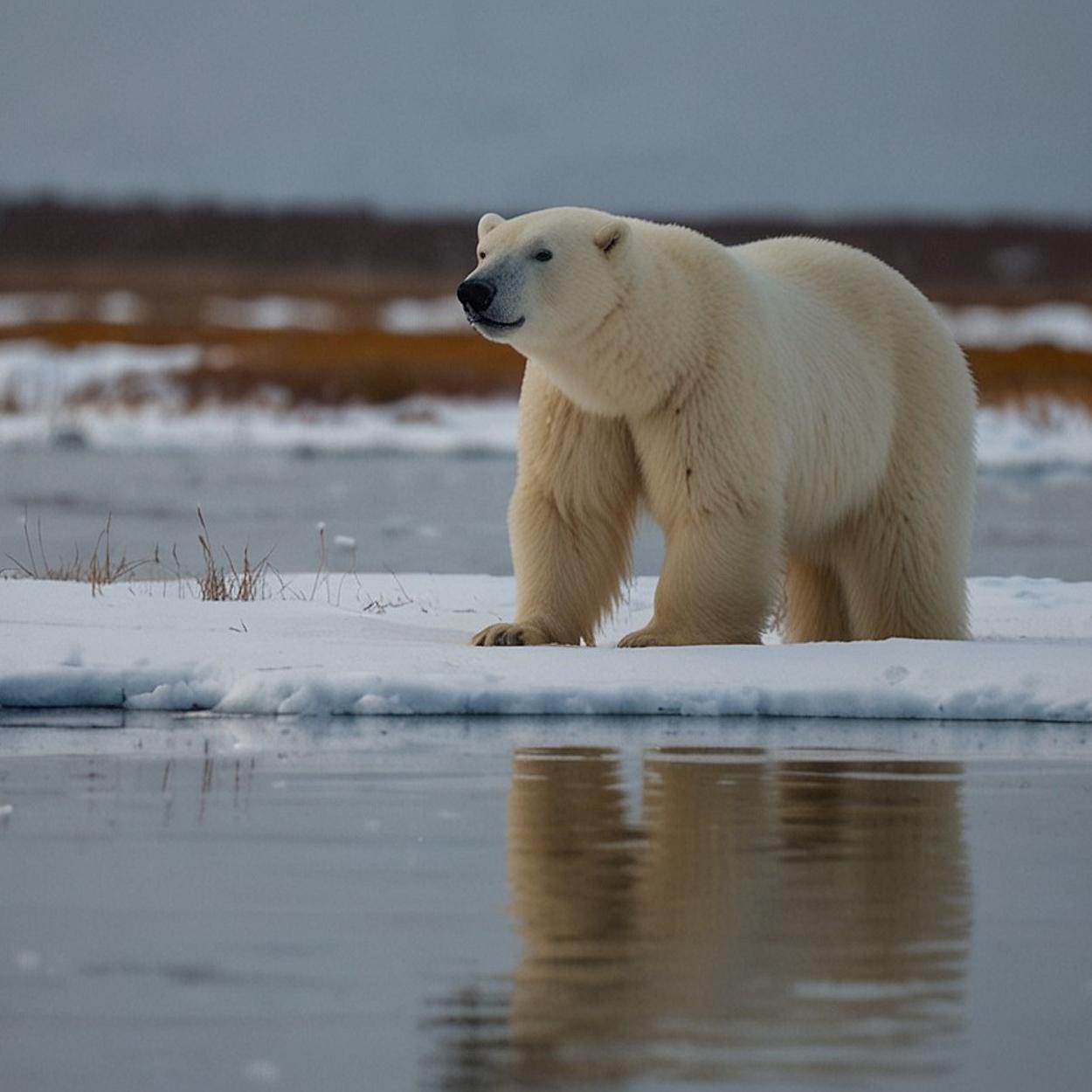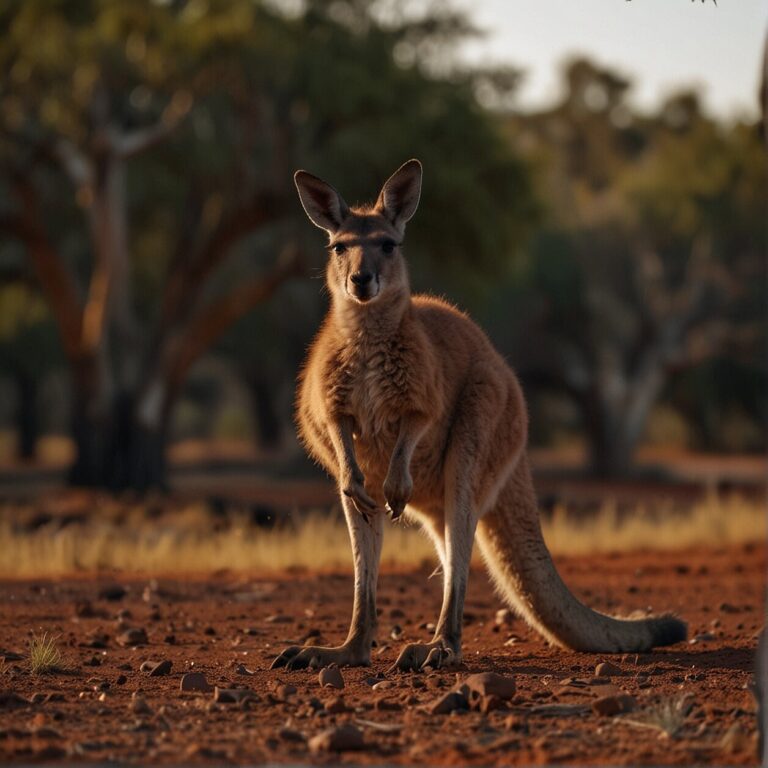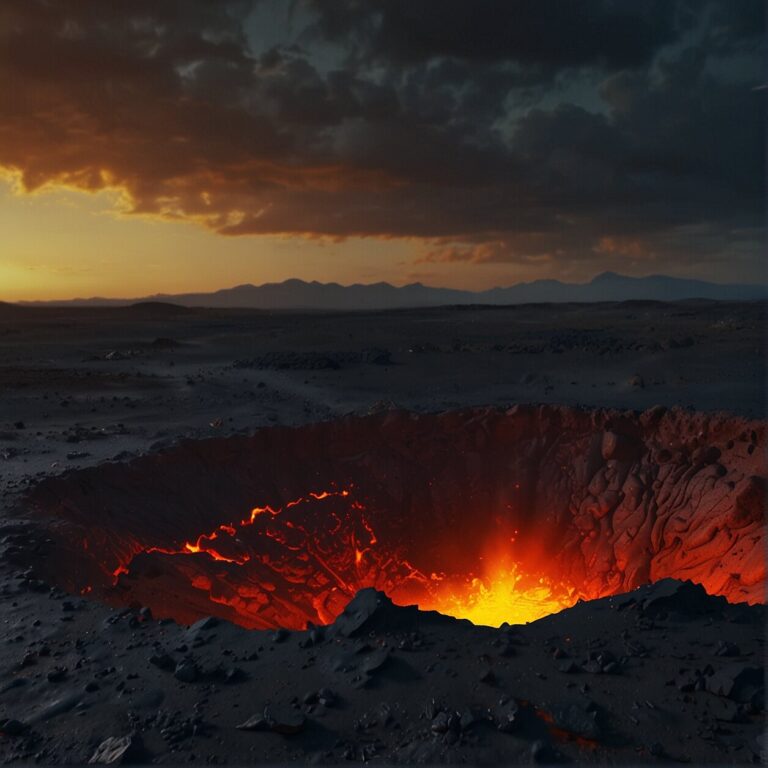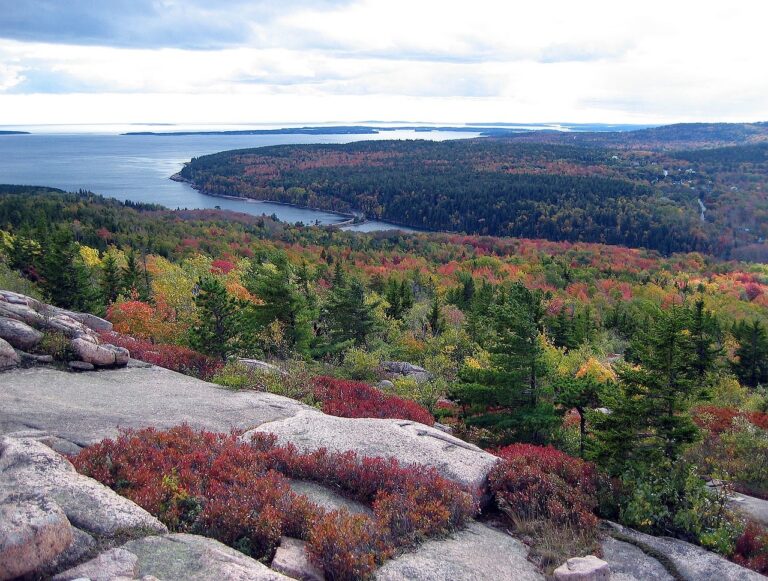Observing Polar Bears in the Arctic Circle
It’s an experience like no other; your heart is pounding, your breath mists up in the freezing air, and right before your eyes majestically walks the true king of the Arctic – the polar bear. There are few wildlife encounters that can match the thrill of observing polar bears in their natural habitat; a spellbinding spectacle that leaves you both humbled and awe-struck.
- Polar bears, some of the most majestic and fearsome creatures on Earth, thriving in the harsh and icy wilderness of the Arctic.
- The fascinating chance to watch these remarkable beings up close, engaging in their daily activities – playing, hunting, or simply napping.
- The poignant reminder of our responsibility to protect this inspiring ecosystem and conserve its inhabitants.
“Witnessing a polar bear in the wild is more than an adventure, it’s a lesson. A lesson in resilience, in the harshness of nature, and a stark reminder of the beauty of our world and our responsibility to protect it.” Unknown adventurer.
Through this guide, we aim to not only unveil the thrill of witnessing this marvel of nature firsthand but also emphasize the necessity to foster responsible and sustainable tourism practices which can contribute to the long-run preservation of these magnificent creatures. So, fasten your seat belts, as we prepare to take you on an unforgettable journey into the white wilderness of the arctic!
Finding the Perfect Season: When to Visit the Arctic
Visiting the Arctic offers you a unique opportunity for an unforgettable experience. However, the timing of your visit can significantly affect the kind of experiences you’ll have. If seeing polar bears in their natural habitat is high on your bucket list, then it’s essential to time your journey right.
The Arctic region is notoriously harsh during winter, making it almost inaccessible. Thus, tourism in this beautiful, frosty paradise is primarily feasible during the summer months. The summer season, ranging from late May to early September, offers a bit of respite from the extreme cold, and progressively longer days provide ample daylight for wildlife spotting and other exciting activities.
Besides the majestic polar bears, the Arctic summer offers a plethora of other exciting sights too. Disko Bay in Greenland, for instance, is a crowd-favorite, famous for the enchanting sight of humpback whales, tranquil kayaking routes, thrilling dog sledding adventures, and towering icebergs floating in the open sea!
However, remember that summer in the Arctic doesn’t bring high temperatures as in other parts of the world. So you can expect a blend of mild weather and icy landscapes—a truly unique setting for an exciting adventure, and a thrilling foreground for observing the magical creatures of the region.
Timing it Right: The Optimal Months to See Polar Bears
The thrill of seeing the majestic polar bear, king of the Arctic, in its natural habitat is truly an unforgettable experience. The key to witnessing these charming creatures in action is timing your visit right.
Historically, the earliest sightings of polar bears have been noted during their migration to Churchill, famously known as the ‘Polar Bear Capital of the World’, between July and November. This coincides with the fall ice buildup and offers visitors ample opportunities to observe these magnificent creatures navigate their icy dominion. The late fall, specifically around November, has been hailed as the peak season for polar bear spotting.
However, like all things in nature, the timing isn’t always exact. The polar night, a period when the sun doesn’t rise for more than 24 hours, occurs in the middle of winter and alters the behavior of the Arctic’s wildlife. As such, unexpected sightings can happen during this time. This drives home the point of why any Arctic expedition should be undertaken with an element of surprise and delight, wrapped in the vast, icy landscapes.
While marine tourism in the Arctic has traditionally been restricted to summer months, things are slowly changing. An increase in demand from eco-conscious tourists, notably Norwegians and other Arctic-touring enthusiasts, is leading to a slow but steady expansion of the season to include early spring and late fall expeditions. Opportunities to observe wildlife like polar bears, narwhals, beluga whales, and walruses are now becoming more feasible in the off-peak months.
Remember, though, that with the thrill of viewing these bewitching beasts also comes a profound responsibility to protect their fragile habitats. Climate change, exemplified by the persistent sea ice melting, has had a devastating impact on polar bears’ natural habitats rendering them more vulnerable than ever. It’s essential that we engage in sustainable tourism practices, to help mitigate the stress exerted on these polar regions.
So while we satiate our longing to witness the Arctic’s grandeur, let’s also remember to tread lightly, and leave no trace behind except the incredibly enriching memories of seeing polar bears in the wild.
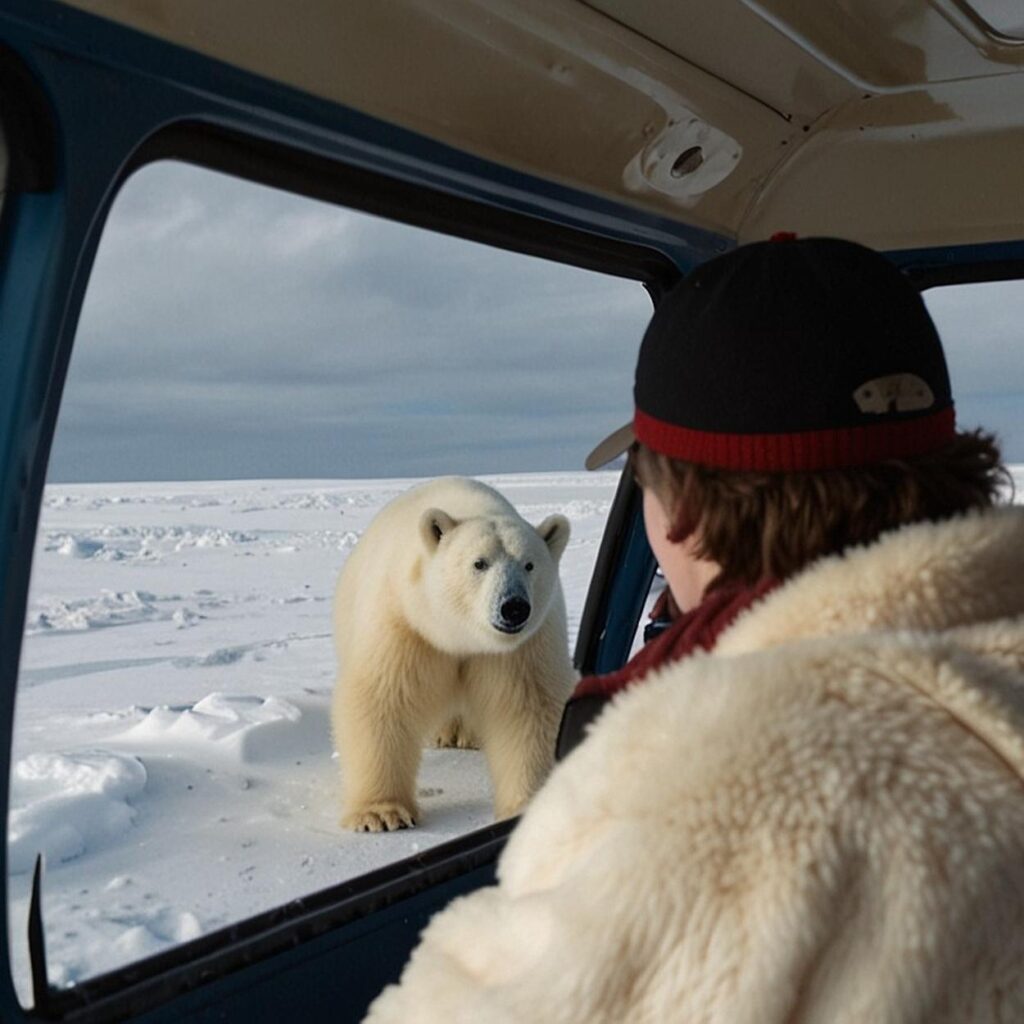
Preparation for the Adventure: What to Expect When Observing Polar Bears
Remember, observing polar bears in their natural habitat isn’t quite like visiting a zoo. You’re stepping into the white expanse of the Arctic, a true wilderness where nature follows her own rules.
You’ll want to mentally prepare for the fact that sightings aren’t guaranteed – these majestic creatures roam vast areas and you are entering their home on their terms. However, the thrill of the wait is almost as rewarding as the sighting itself, an anticipation that heightens your resolve and respect for the wild.
Polar bears are curious by nature, but remember that they are also apex predators. It’s essential to respect their space and behave responsibly, maintaining a safe distance at all times. If you’re lucky enough to spot one of these beauties, savor the moment rather than focusing solely on capturing the perfect photograph – it’s an experience you’ll carry with you forever.
Besides the polar bears, the Arctic is a treasure trove of unique natural phenomena and other wildlife such as narwhals, beluga whales, walruses, and the arresting beauty of the polar night. Engaging in activities like kayaking, dog-sledding, mountaineering, and boating can allure even the most ardent landlubber into their icy charm. Destinations like Disko Bay in Greenland are popular for their humpback whales, kayaking, dog sledding, and staggering icebergs.
Getting used to the cold, of course, is an essential part of the experience. As an Arctic visitor, be prepared to grapple with slippery ice and biting winds, expertly camouflaged into the thrill of this great adventure. Appropriate clothing is key, including a good pair of boots and insulated, waterproof gear.
In conclusion, while it’s about the majestic polar bears, it’s also about immersing yourself in the Arctic’s splendors. The wilderness. The extraordinary calmness. The sense of a world untouched. Most importantly, it’s about walking away with a deepened understanding of why it’s our responsibility to protect this region and its inhabitants.
Venturing into the Wild: How to Observe Polar Bears Safely
Observing polar bears in their natural habitat is a thrilling experience, but it comes with a set of unwritten rules that are crucial for your safety and for the preservation of this wild frontier. Your journey into the Arctic wilderness may be guided by an experienced local expert, but it helps to know the trio of safety, respect, and sustainability.
Safety first, as they say. Never approach a polar bear, and always maintain a safe distance. It’s not just about your safety, but also about minimizing stress for the animals. Even the slightest disruption can have an adverse impact on their survival, particularly during their feeding, mating, and denning periods.
Respect is the second cornerstone to consider. The Arctic is home to not only polar bears, but also an array of captivating wildlife like narwhals, beluga whales, and walruses. To ensure their well-being, it’s critical to minimize noise and other disturbances. Quiet observation may bring you more intimate insights into the life of these majestic beings.
The final part is sustainability. Tourism in the Arctic should promote a balance between offering unforgettable experiences and causing minimal impact on the ecosystem. It’s essential both for conservational functionality and to allow future generations to experience the same sense of wonder. Adhering to guidelines that prevent disturbance to Arctic peoples, wildlife, vegetation, and cultural remains is key.
Unleashing inner explorer and stepping into the homeland of the formidable polar bear means recognizing your responsibilities to our planet. Bear in mind, with each visit, you’re contributing to a sustainable tourism model that is as exciting as it is educational.
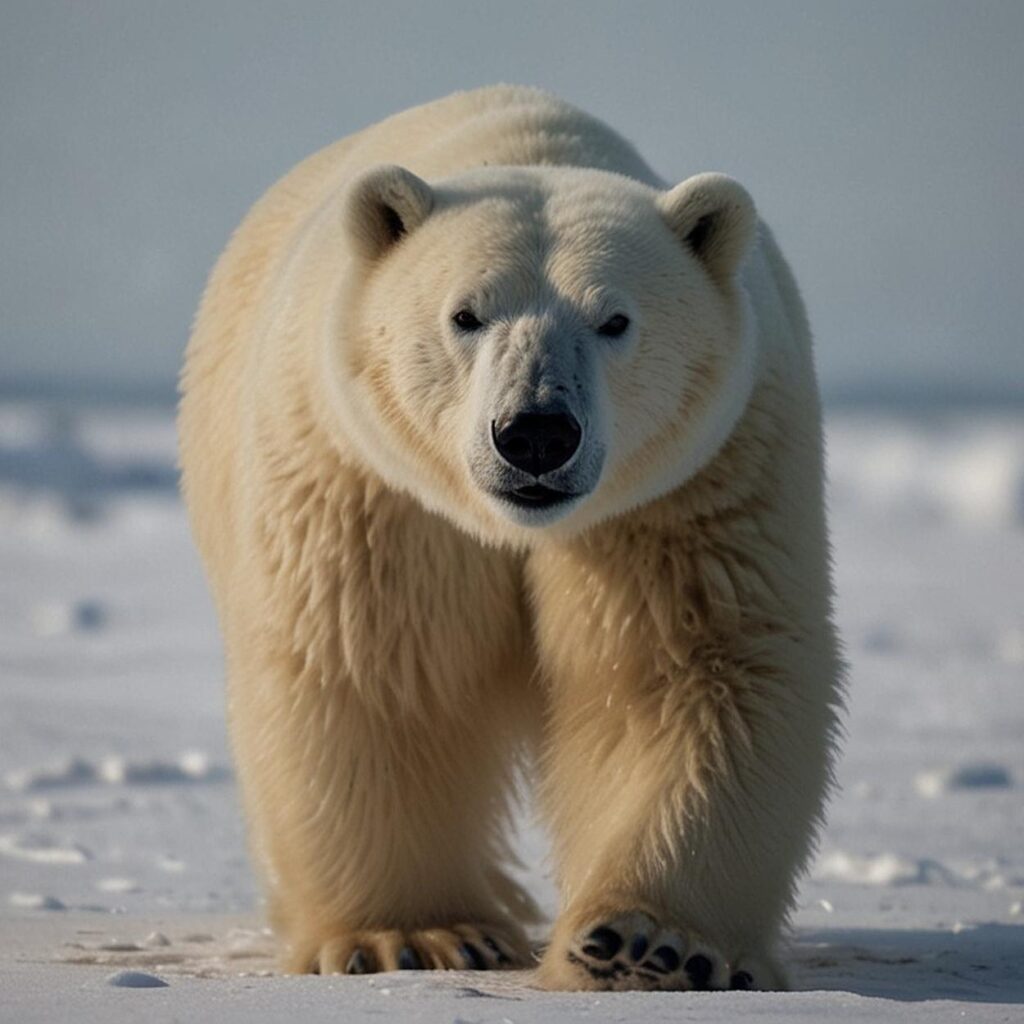
Protecting our Polar Pals: How Your Visit Can Contribute to Conservation
When you step onto the chilly tundra in search of these magnificent creatures, you become more than a tourist – you’re a participant in a global effort to conserve and protect these majestic beasts and their frigid homes. The mere act of choosing to witness polar bears in their natural habitat can have a ripple effect on the survival of these amazing animals.
Traveling responsibly contributes to protecting polar bear populations and the delicate Arctic ecosystem. This includes choosing tour operators committed to responsible tourism. Although the Arctic tourism industry is growing, organizations like the Sustainable Arctic Tourism Association and the Arctic Council are working tirelessly to maintain a balance between allowing people to experience the mystic beauty of the Arctic and minimizing the environmental impact.
These organizations focus on sustainable marine tourism by closely monitoring tourist ships and their influences on coastal areas, hence reducing the environmental risks of visiting these remote, icy paradises. The growth of marine tourism – with more and more voyages to observe charismatic megafauna like polar bears, narwhals, beluga whales, and walruses – serves as a dual-edged sword. It poses a potential threat to the natural environment, but also opens abundant opportunities for visitors to become ardent supporters of Arctic conservation.
By visiting the so-called “polar bear capital of the world” – Churchill – or embarking on a Norwegian polar tour, you’re contributing to local economies that sustainably live off tourism and conservation. Arctic communities rely on tourists like you not only for economic survival, but also to spread awareness about the importance of protecting the Arctic and its denizens.
Remember, each trip to the Arctic isn’t just an adventure; it’s a chance to contribute positively to these conservation efforts. By understanding and respecting the environment you’re stepping into, you become an ally in the struggle to protect the Earth’s last wilderness. Make the most of your Arctic journey, and help ensure future generations can marvel at the beauty of polar bears in the wild – just as you have.
FAQ’S
As you prepare for your Arctic adventure, there’s no doubt you have a few questions. It’s a corner of the world that’s not only geographically remote but also wrapped in mystery and allure. Whether you’re wondering about specific tours, the best locations, or simply how to coexist respectfully with these massive predators, our FAQ section is here to shed light on all your queries. With information gathered from seasoned guides, local insights, and discussions with conservation experts, we aim to make your journey as safe and memorable as possible. Read on to quench your curiosity and prepare for the once-in-a-lifetime thrill of seeing polar bears in their natural habitat.
Are there specific tours for observing polar bears in the Arctic?
Yes, indeed. There are several tours designed specifically with the goal of providing you with the awe-inspiring opportunity to observe polar bears in their natural Arctic habitat. These tours are often organized by experienced guides who are well-versed in the ways of the Arctic and its majestic wildlife.
Many tours are scheduled to coincide with the migration patterns of the polar bears, enhancing the chances of sightings. Some popular options take tourists to Canadian locales like Churchill, a town frequented by bears. Similarly, Norwegian expeditions often take you to Svalbard, an archipelago where polar bears outnumber the human population!
Remember, seeing a polar bear in the wild can be an thrilling highlight of any Arctic adventure, but it’s paramount that these encounters are carried out safely and responsibly to minimize impact on these magnificent creatures.
Which areas in the Arctic are best for observing polar bears?
If you’re wondering where in the Arctic you can best catch a glimpse of the majestic polar bears, a prime spot is Churchill, often lauded as the “polar bear capital of the world”. Located in Canada’s frosty Manitoba province, this town is where large numbers of polar bears gather annually to wait for the sea ice to freeze, offering unparalleled opportunities for visitors to witness these stunning creatures up close.
Another top contender is the Svalbard Archipelago in Norway. Due to the high density of polar bears residing in this area, it’s not uncommon for visitors to spot these magnificent bears padding along the ice floes or hunting for seals out at sea. Just remember to keep an admirable distance – it is their home after all!
You might also want to consider the astonishing Franz Josef Land in Russia. Comprising over a hundred islands, it offers an authentic arctic experience, alongside the chance to see polar bears in their natural habitat. Early sightings of polar bears often indicate that the migration season is imminent, elevating the thrill of anticipation among adventure seekers.
Last but not least, don’t overlook Disko Bay in Greenland. Although it’s more known as the go-to spot for dog sledding, humpback whale sightings, and significant icebergs, the chance to explore the Arctic Circle Trail may also reward you with sightings of wanderlust-stricken polar bears.
Remember, the value of these sightings comes with a significant responsibility. Part of the appeal of marine tourism in the Arctic is the chance to observe wildlife such as polar bears, narwhals, beluga whales, and walruses, all while respecting and preserving their natural habitats. Seeing them should be the ultimate thrill, not hunting them. Embrace your role in this ecosphere, prioritizing ecotourism as the key approach to your Arctic adventures, making it a win-win situation for you and our polar pals.
What are some ethical practices to follow when observing polar bears?
Engaging with wildlife, particularly a majestic creature like the polar bear, is an experience like no other. A crucial part of that experience is understanding and adopting ethical practices to preserve the integrity of the Arctic ecosystem. Respect for the environment is paramount to ensure its longevity and the safe survival of its unique species.
First and foremost, keep a respectful distance from not only the polar bears but from all the wildlife you encounter. It’s exciting to be in close proximity to a polar bear, but remember that they are wild animals, and disturbing their natural behavior can have unpredictable consequences. Respect their space and observe them from a safe and responsible distance.
Avoid leaving anything behind that might disrupt or pollute their habitat. The Arctic is a beautiful and pristine environment that we need to keep unspoiled. Bring back everything you brought, every wrapper or piece of equipment.
The Arctic’s indigenous peoples and their cultures also deserve the utmost respect. They have lived in harmony with the region and its wildlife for thousands of years. Do not intrude into their lands without permission, and ensure any interactions are done with consent and respect.
Lastly, while it is tempting to want to feed these magnificent bears, it is essential to remember that feeding wildlife can lead to dependency, changes in their natural behavior, and conflicts with humans. Therefore, it’s best to let them find food in their natural way.
All these practices are crucial steps in maintaining the delicate balance of the Arctic ecosystem and preserving the experience for future generations of wildlife lovers.
What kind of equipment do I need to observe polar bears?
Embarking on an endeavor to spectate the magnificent polar bears in their natural habitat requires some crucial pieces of kit. First, dressing according to the Arctic’s famously icy conditions is paramount. Opt for layered clothing that includes thermal undergarments, insulating mid-layers, and wind-resistant outer layers. Hats, mittens, neck gaiters, and insulated boots are essential too. Cope with the Arctic’s eternal brightness or the polar night’s darkness with polarizing sunglasses and a good quality headlamp respectively.
Tools for enhancing your observation also come in handy. Your journey is not complete without a pair of binoculars for close-up views of the polar bears while maintaining a safe distance. A versatile camera is a must for photographers aiming for those perfect, unforgettable shots. Remember the spare batteries since cold conditions can drain battery life swiftly.
Moreover, don’t forget to bring an eco-friendly water bottle, and energy-dense snacks to keep you hydrated and energized in this extreme environment. Lastly, while the tour operators often provide necessary safety gear, ask them about what they supply beforehand to avoid surprises.
Properly equipped, the Arctic turns from a formidable wilderness into a wondrous landscape, teeming with unforgettable sights of the majestic polar bear.
How to behave if a polar bear approaches during the tour?
You’ll feel your heart pounding and your breath catching if a polar bear comes your way during your Arctic tour. However, it’s vital to remember that these creatures deserve respect and need space. Remember, your actions impact both your safety and that of the bear.
Firstly, maintain a steady calmness. While your adrenaline may be racing, appearing panicked or threatening will only exacerbate the situation. If spotted, hold your ground but never try to intimidate or scare the majestic creature away. The key behavior here is to not interfere or impact their natural behavior.
Think about maintaining distance. Recognized guidelines suggest a safety buffer of at least 100 meters between you and the polar bear. In the case where a bear approaches, retreat slowly and calmly. Do not run or make sudden movements; this could trigger a chase response.
Finally, always follow the guidance of your expedition leader or guide. They are seasoned experts with experience in these situations and will help to assure safe and respectful wildlife encounters. Remember, your preparation and mindfulness can protect these beautiful creatures, their habitat, and ultimately, our planet’s future health.

